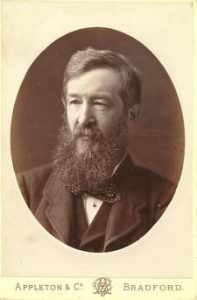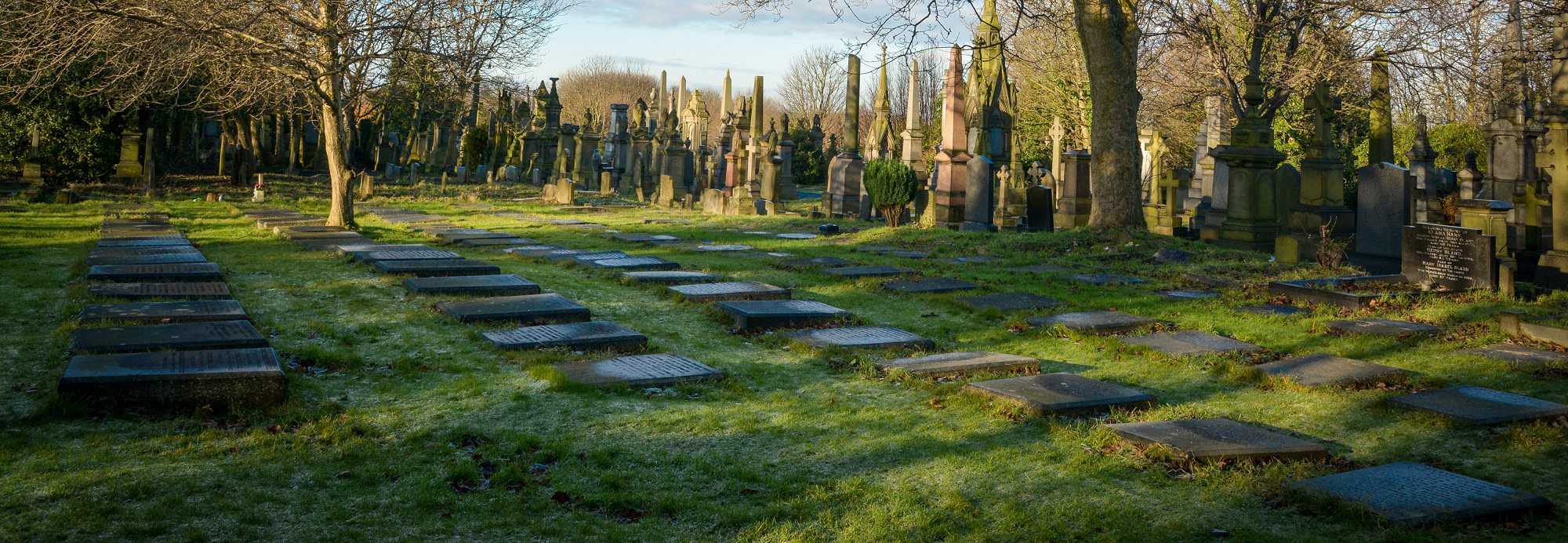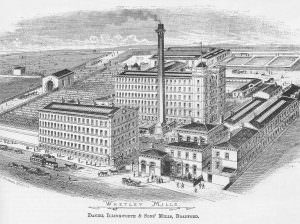Alfred the son of Daniel and Elizabeth Illingworth of Manningham was born on the 25 September 1827. His father was a worsted spinner.
Daniel Illingworth (1792-1854) and his brother Miles established their first factory at Prospect Mills, Wakefield Road. In 1825, they built a mill In Hope Street, Manchester Road but this was later demolished to expand the Lancashire and Yorkshire Railway. After briefly tenanting Union Street Mill the partnership dissolved in 1837 and Daniel built mills at the foot of Tetley Street which became known as Providence Mills. Daniel continued to operate from here until his death in 1854.
Alfred was educated at Huddersfield College after which at the age of sixteen he joined his father’s business at Providence Mills together with his brother Henry.
In 1865, they bought part of Whetley Farm Estate and built Whetley Mills one of the largest spinning mills in Bradford, it operated under the name Daniel Illingworth and Sons. The mill was directly opposite Alston Works which the Holden family had just completed in 1864.


 In 1866, Alfred married Margaret Holden the daughter of Sir Isaac Holden and together they had six sons. He was a keen Liberal and in 1868 he took over his father in law’s seat in Knaresborough but retired in 1874 as he was deemed too radical for Knaresborough. Despite this, eleven other constituencies asked him to be their candidate. He refused, believing he could be of more use in a private capacity. In 1880, he became an MP for Bradford and a colleague for the Right Hon William Edward Forster, and in 1885 became the MP for Bradford West. He kept this seat until 1895.
In 1866, Alfred married Margaret Holden the daughter of Sir Isaac Holden and together they had six sons. He was a keen Liberal and in 1868 he took over his father in law’s seat in Knaresborough but retired in 1874 as he was deemed too radical for Knaresborough. Despite this, eleven other constituencies asked him to be their candidate. He refused, believing he could be of more use in a private capacity. In 1880, he became an MP for Bradford and a colleague for the Right Hon William Edward Forster, and in 1885 became the MP for Bradford West. He kept this seat until 1895.